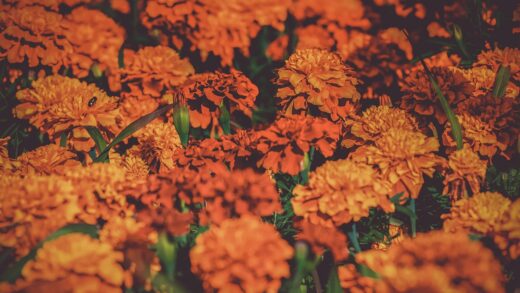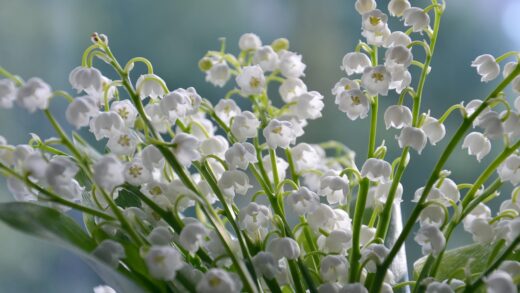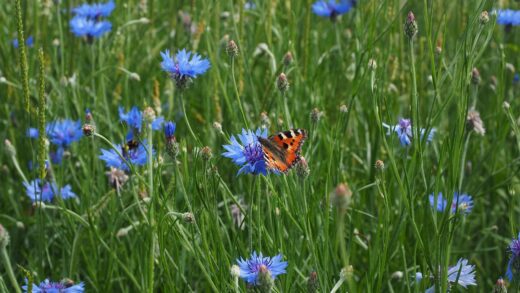For gardeners in climates with freezing temperatures, successfully overwintering a plumeria is a critical annual task that ensures the plant’s survival and paves the way for a spectacular return the following spring. This process involves guiding the plant into a state of natural dormancy, a resting period that allows it to conserve energy through the cold, dark months. Understanding how to prepare, store, and care for a dormant plumeria is not merely about protection from the cold; it is about respecting the plant’s natural life cycle. Proper overwintering is the key to preserving your tropical investment and enjoying its beauty for many years to come.
Recognizing and inducing dormancy
The transition into dormancy is a natural process for plumerias, triggered by environmental cues, primarily decreasing daylight hours and cooler temperatures. As autumn progresses, you will notice the plant’s growth slows down significantly. The most obvious sign is that the leaves will begin to turn yellow, often in vibrant shades, before dropping from the branches one by one. This is a normal and healthy process, indicating the plant is shutting down its active metabolic functions and preparing for its winter rest.
You can assist the plant in this transition by adjusting your care routine. The most important change is to drastically reduce watering as the leaves begin to fall. A plant without leaves transpires very little water, and continuing to water at summer levels will lead to waterlogged soil and root rot. Additionally, all fertilization should be stopped by early autumn. Feeding the plant late in the season would encourage new, weak growth that is highly vulnerable to cold damage and would disrupt the natural progression into dormancy.
The critical temperature threshold for bringing plumerias indoors for protection is when nighttime temperatures consistently begin to drop towards 5 to 7 degrees Celsius. While a mature plumeria can tolerate a very brief, light frost, it is not worth the risk, as a hard freeze can be fatal. It is far better to be proactive and move the plant to its winter storage location before the first frost is forecasted. This ensures the sensitive tissues within the stems are not damaged by freezing temperatures.
Before moving the plant indoors, it is a good practice to inspect it thoroughly for any pests, such as spider mites or scale insects. Overwintering can provide an ideal environment for these pests to multiply unchecked. Treat any infestations with horticultural oil or insecticidal soap while the plant is still outdoors. You can also prune off any remaining leaves to further reduce the risk of bringing pests inside and to encourage a cleaner, more complete state of dormancy.
More articles on this topic
Preparing the plant for storage
Once the decision is made to bring the plumeria indoors, a few preparatory steps will increase its chances of a successful winter rest. If the plant still has some leaves, many growers choose to manually remove them. This helps to ensure the plant enters a deep state of dormancy and eliminates potential hiding spots for pests. The leaves can usually be removed by gently pulling them downwards at their base; they should snap off cleanly from the stem.
Next, consider the root ball and soil. It is essential that the soil is quite dry before the plant goes into storage. If the soil is moist, it can easily lead to root rot in the cool, stagnant conditions of a winter storage area. Withhold water for a week or two before you plan to move the plant inside to allow the soil to dry out as much as possible. This is one of the most critical steps in preventing fungal diseases during the long storage period.
For plumerias planted in the ground in temperate climates, you will need to dig them up for storage. Carefully dig around the root ball to preserve as many roots as possible. Once the plant is lifted, gently shake off the excess soil from the roots. Some growers prefer to store their plants bare-root after allowing the roots to air dry for a day or so. This method saves space but requires careful monitoring to ensure the roots do not completely desiccate over the winter.
Another option for both in-ground and potted plants is to reduce the size of the root ball for easier storage. You can carefully prune some of the outer roots and repot the plant into a smaller container with dry, fresh soil. This can be a good time to inspect for any signs of rot and trim away unhealthy sections. This method combines the benefits of root pruning with providing a dry, stable environment for the winter months.
More articles on this topic
Optimal conditions for winter storage
The ideal location for overwintering a dormant plumeria is a place that is cool, dry, and dark, and most importantly, remains above freezing at all times. An unheated garage, a basement, a frost-free shed, or even a dark closet in a cool room can serve as an excellent winter sanctuary. The key is temperature stability; the location should consistently stay between 4 and 10 degrees Celsius. This temperature range is cool enough to keep the plant fully dormant but warm enough to prevent any frost damage.
During dormancy, the plumeria requires absolutely no light. The absence of light helps to ensure that the plant does not try to break dormancy prematurely. You can store the plant upright in its pot, or if you are storing it bare-root, you can lay it on its side on a shelf, hang it upside down, or stand it in a box or bucket. The orientation is less important than ensuring the storage area is dry and has some minimal air circulation to prevent mold.
Watering during dormancy should be almost nonexistent. The goal is simply to prevent the stems and roots from becoming completely shriveled and desiccated. For a potted plant in dry soil, this might mean providing a very small amount of water—perhaps only a cup or two—just once a month. For bare-root plants, some growers lightly mist the roots once a month. It is always better to underwater than to overwater a dormant plumeria; excess moisture is its greatest enemy during this period.
It is wise to check on your stored plants periodically throughout the winter, perhaps every few weeks. Feel the stems to ensure they remain firm. If a stem feels soft or mushy, it is a sign of rot, and the affected branch should be pruned immediately to prevent it from spreading. If the stems appear severely shriveled, it may be an indication that the plant is too dry, and a very light watering may be warranted. These occasional check-ups can help you catch any potential issues early.
Waking the plumeria in spring
The process of waking your plumeria from its winter slumber should be timed with the arrival of stable, warm weather in the spring. As the danger of frost has passed and daytime temperatures are consistently warm, it is time to bring your plant out of storage. This is a gradual process; you should not move the plant directly from a dark garage into intense, full sun, as this can scorch the tender stems and any emerging new growth.
Begin by moving the plant to a bright, shaded location, such as a covered porch or under the canopy of a larger tree. This allows it to slowly acclimate to the increased light levels and warmer temperatures. At this time, you can provide its first significant watering since the previous autumn. Water the soil thoroughly until it drains from the bottom of the pot. This drink signals to the plant that its resting period is over and it is time to begin a new season of growth.
After this initial watering, be patient and wait for signs of new growth. You will soon see small, pointed leaf “claws” beginning to emerge from the tips of the branches. Do not resume a regular watering schedule until these new leaves have started to grow and unfurl to a length of a few inches. Watering a leafless plant too frequently in the cool spring weather is a recipe for rot. The emergence of leaves indicates that the plant’s root system is active and ready to take up water.
Once the plumeria has a set of newly developed leaves, you can gradually move it into a location that receives more direct sunlight. Over a period of one to two weeks, incrementally increase its sun exposure until it is back in its preferred spot with at least six hours of full sun per day. At this point, you can also begin your regular summer fertilization program to provide the nutrients it needs for vigorous growth and a season full of beautiful, fragrant flowers.


















